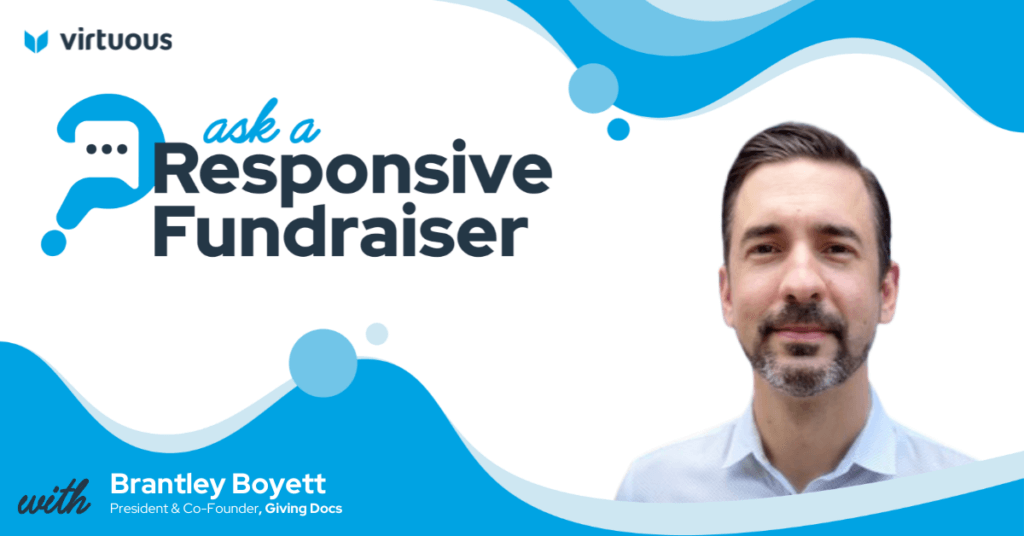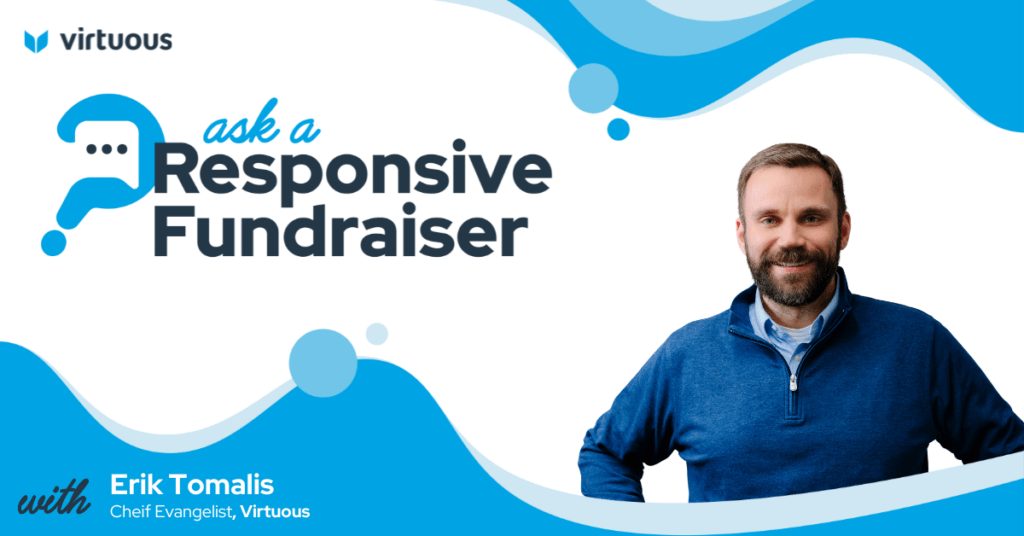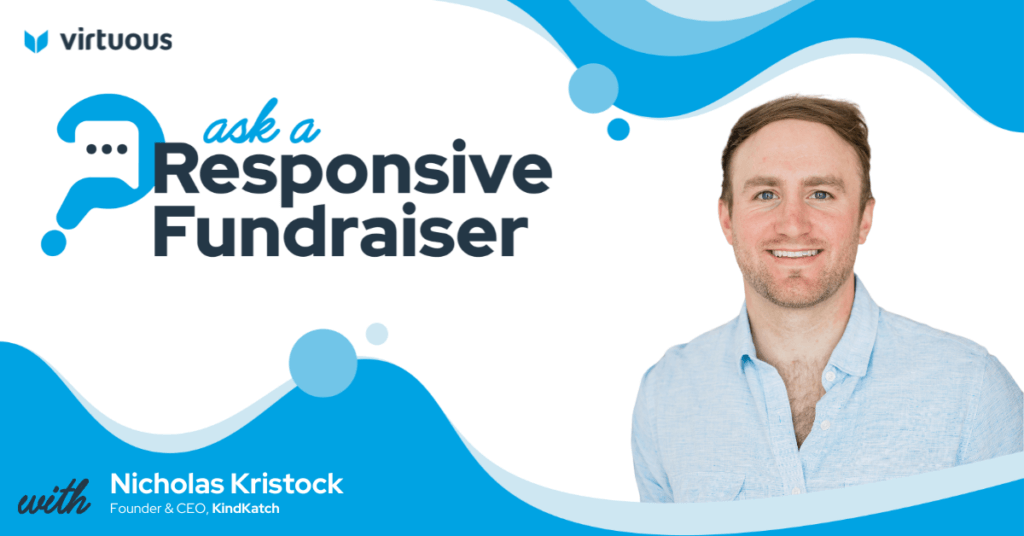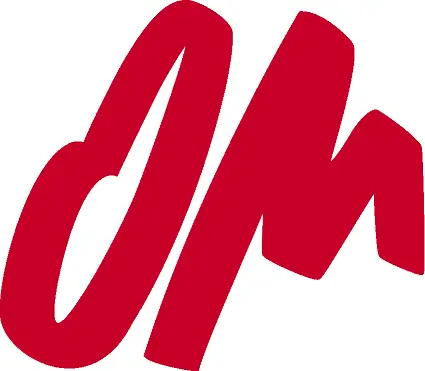Welcome back to Ask a Responsive Fundraiser, where we tackle some of the most pressing questions nonprofit organizations face in their quest to make a difference. This week, we welcome Diana Hoyt, Chief Strategist and Trainer at Formula for Fundraising, with another video edition! Whether you’re trying to engage younger donors, figuring out how to keep your fundraising stable even in downturns, or creative ways to highlight your mission, we’ve got you covered!.
Be sure to check out past editions of Ask a Responsive Fundraiser and leave us a comment on LinkedIn so we can answer your questions!
Let’s dive in and see how you can transform these common hurdles into opportunities for growth!
Dear Responsive Fundraiser: With the generational shifts in giving patterns, what could we do to attract and retain younger donors? Are there ways that we can better communicate our mission to resonate with their values?
—Communication Quandries
Dear Communication: I believe that most organizations would define a younger donor as being in their 20s and 30s, or maybe college age, but primarily, we’re talking 20 and 30-year-olds because they’ve got a job and they have money. So that’s the target. I think the key to this question has to do with engagement and being personal.
I think that age group spends a lot of time on their phones, texting, and with social media of different types. And what we do know is that’s causing isolation. So I think anything you can do to engage them personally. We even hear things like sending them mail because they don’t get mail, and they think it’s kind of exciting to get an envelope in the mailbox.
I think it’s being more personal—volunteerism, especially if you can bring them together as a group. You know, come and bring two of your friends or whatever and so they’re engaged in being able to volunteer. I think engaging them in an activity makes a huge difference. Anything that will involve camaraderie and maybe have a social component.
You have to do something to make sure you’re capturing their information, and to me, one of the things you want to capture is how they prefer to communicate and then follow up.
Dear Responsive Fundraiser: Recent conversations with our board have centered around increasing the resilience of our fundraising. Considering the current economic landscape and its impact on giving, what strategies can we adopt to maintain stability and grow our fundraising efforts, even during downturns?
—Fortifying our Fundraising
Dear Fortifying: I’ve been through a couple of downturns with organizations… And I even know a couple in 2008 and 2009 that actually raised more money. Because one of the things that happens is people say, “Oh, well, we can’t, things are bad. We can’t ask them for money.” But, that’s when they’re more likely to give more. Look what happened in 2020 with the COVID pandemic. Fundraising shot up because people said, “I’m OK. I can help.” And they did.
That was one of the highest years we’ve ever had in fundraising. So the number one thing is to keep fundraising.
Don’t back off—you have people who need you and those services. So just keep doing your job. The second thing is gratitude.
I used to have a written policy about donor recognition that I gave to clients and did workshops on. I’ve rewritten that to say donor gratitude policy because it’s not so much about recognizing them with a plaque or a name on something. It’s about simply saying thank you. We keep saying that. We keep saying, “You’ve got to say thank you.”
I actually did a workshop a couple of weeks ago at a conference and the lady said, “Well, isn’t just that automatic thank you by email good enough?” And I said, “No, anyone can do that. Or any other piece of software.”
Handwrite a note that says, “Thank you; your gift is appreciated.” I’ve had ED [executive director] say to me, “Well, I just don’t have time to do thank yous.” If you don’t do thank yous, you won’t have donors.
So you have to express gratitude. You have to do it fast, and you have to do it with sincerity. You’ve got to make it personal.
Dear Responsive Fundraiser: One area that we want to grow in 2025 is how we incorporate stories into our donor engagement. What techniques can we use to do this to both highlight our mission and create a deeper connection with current and potential donors?
—Connection Questions
Dear Connection: I love what I call “VIP events.” And everybody always goes, “Oh, that’s your big donors.” No, it can be a donor at any level. You can have, a breakfast meeting, you can have a lunch meeting, you can have an online meeting—ways to engage those donors and it doesn’t have to be a fancy big thing.
If I were doing $5,000 and up donors, I might use a donor’s home and keep it really personal. Or, if it’s an organization like a food bank, where people can actually go there and simply have coffee and bagels. Do whatever you can to get people, and get a mix of donors together.
You know, we always think we have to silo them. That the big donors are here, and the medium donors there, and the little donors over there. Well, why can’t they all be in the same room? Why can’t they all learn from each other? And I think that nonprofits could go a long way to breaking down some of those silos.
These are all people who have the same values. At a small VIP event, you can have a real conversation, and if you can, bring in a client, a recipient, somebody who adopted a dog, somebody who’s no longer living on the street, somebody who was given medical care.
It’s special because you’re bringing people together to learn. And that’s what it’s really all about.
(Editor’s note: Diana’s answers were edited for length and clarity. Watch the video to see her full answers.)





